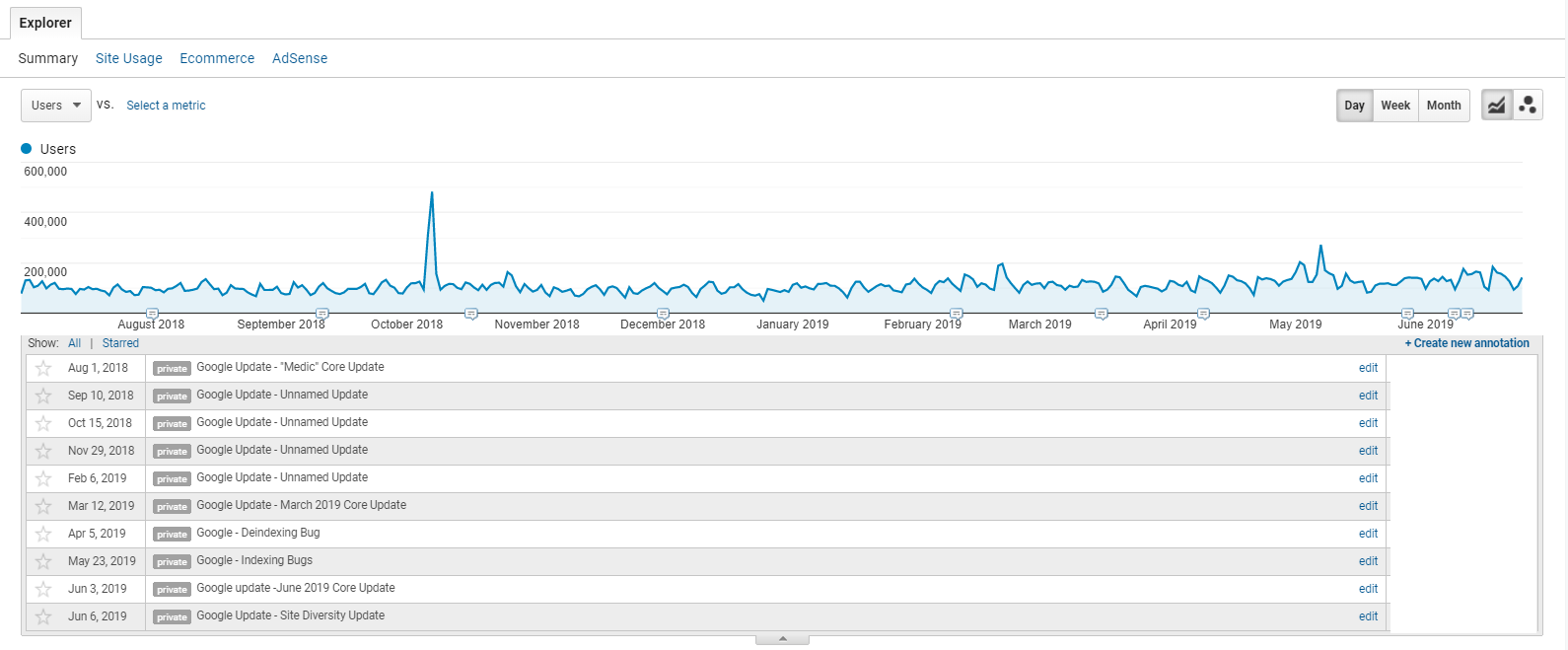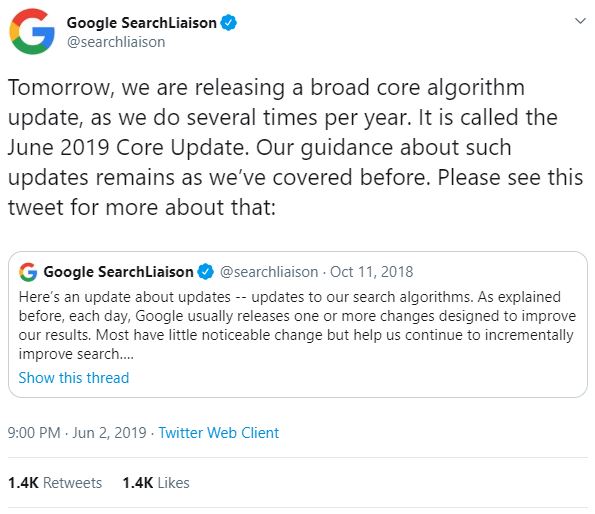
With Google releasing more information of when updates take place, you should see it as a good practice to highlight this information in your Google Analytics account[1].
With the use of annotations, you will now have a visual guide in Google Analytic’s reports to help understand if you have been affected negatively or positively from the updates made to Google algorithm. But you can also use this to mark other important events for when changes have been applied to your website.

Source: Google Analytics
A four-step guide to creating an annotation
- Click on the small down arrow pointing triangle of any graph type of report.

Source: Google Analytics
2) Click on the “+Create new annotation”.

Source: Google Analytics
3) Complete the small form, select the date of the Google update and a small note that makes it clear what update/change took place.
4) And last but not least hit “Save”.
You can set your annotations to be private or shared (only if you have collaboration-level access the Google Analytics account can you select shared annotations).

Source: Twitter.com
When Google released the June core update in 2019, Google’s search liaison team pre-announced the update via Twitter, this is the first time they have ever done this. You can take advantage of this in the future by adding google annotations in advance so that you can see if there was a negative or positive effect on your organic traffic from google.
Having the ability to add annotations with a date set in the future can come in particularly handy if you know that there is an update about to go live

